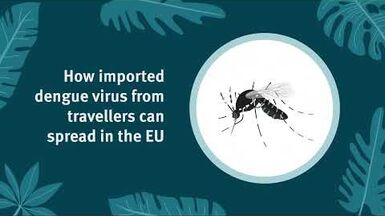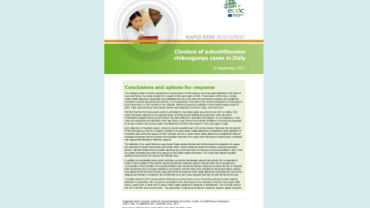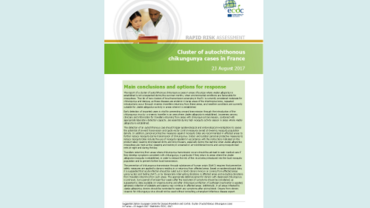Rapid risk assessment: Autochthonous cases of chikungunya fever on the Caribbean island, Saint Martin
Following the confirmation of two cases of autochthonous chikungunya on the Caribbean island of St Martin, ECDC performed a rapid risk assessment. Although there is a risk that travel-related cases may be seen in continental Europe, onward transmission in the EU from imported cases during the winter season is not to be expected.
Executive Summary
Confirmed autochthonous transmission of chikungunya on Saint Martin, risk for travel-related cases in continental Europe and unlikely onward transmission from imported cases in EU are reported in ECDC rapid risk assessmentissued today. The first locally-transmitted chikungunya cases have been found in the French part of Saint Martin, a small Caribbean island divided between France and the Netherlands.
Saint Martin is a popular travel destination for EU residents. Due to the increased travel during the Christmas holidays, vigilance must be maintained regarding imported cases of chikungunya in the EU, including awareness among clinicians and travel clinics and blood safety authorities. Further local transmission from imported cases in the EU is not expected, as the mosquitoes that transmit chikungunya are not active during the winter season.
The risk of spread of the disease from Saint Martin to other islands in the Caribbean region is high. The disease is new to the Caribbean, therefore the laboratory capacity to confirm suspected cases is limited and should be strengthened.
Prevention of chikungunya is currently based on protection against mosquito bites, as exposure to infected mosquitoes is the principal risk for infection. Chikungunya is a mosquito-borne viral disease, transmitted by the bite of Aedes mosquitoes – mosquitoes that are present also in Europe.
This is the first documented autochthonous transmission of chikungunya virus in the Americas. Chikungunya is endemic in parts of Africa, South-east Asia and on the Indian subcontinent. In Europe, every year, imported cases among tourists are identified in several countries, with 475 imported chikungunya cases in EU/EEA countries for 2008–2012. The first autochthonous transmission within continental Europe was reported from Emilia Romagna, Italy in 2007 and in 2010 in Var, France.







